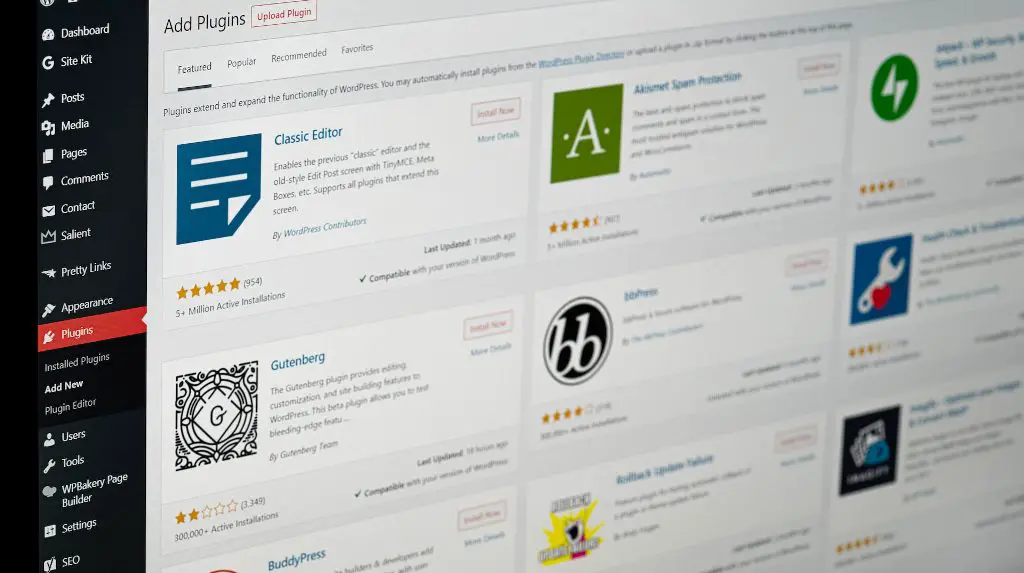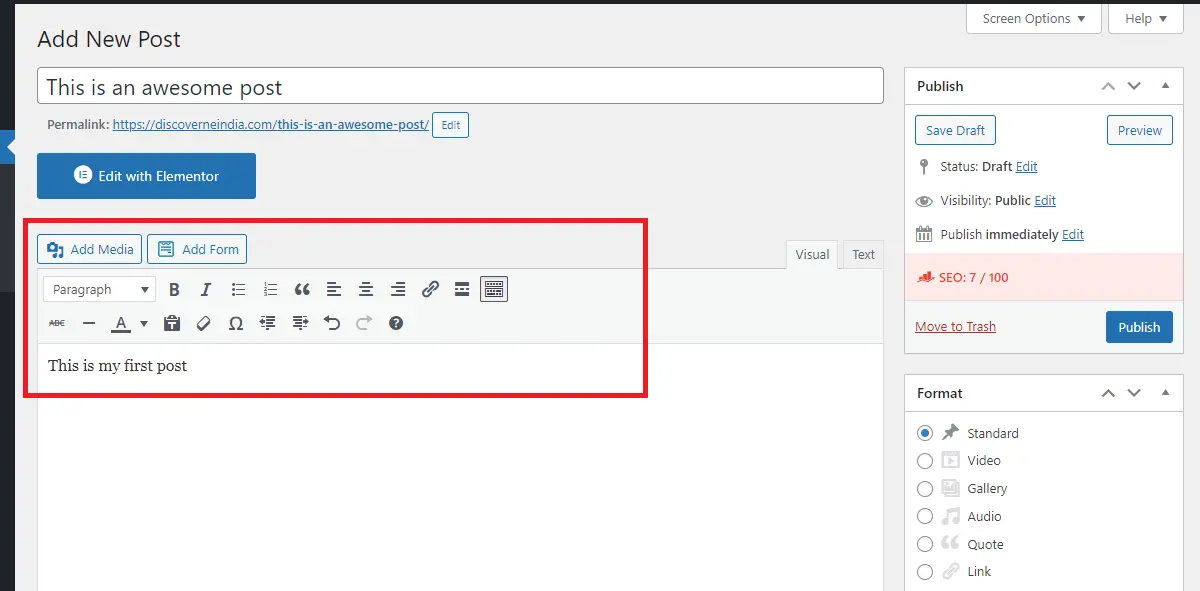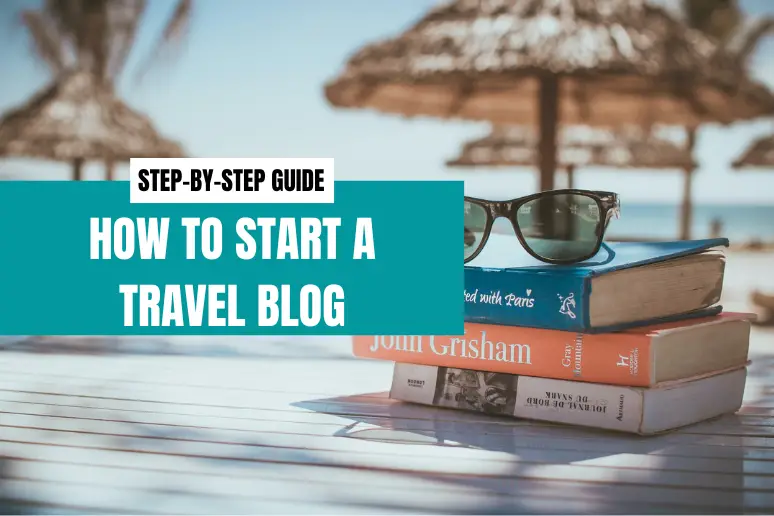Are you a wanderlust enthusiast with a passion for travel and a desire to share your experiences with others? If so, starting a travel blog is an excellent way to document your adventures and inspire others to explore the world. Not only is it a fun and fulfilling hobby, but it can also be a great way to make money and fund future trips.
In this guide, we’ll walk you through the steps you need to take to create your own travel blog and start sharing your stories with the world.
To create a successful travel blog, there are several key components you’ll need to have in place. These include:
- Web hosting: This is the foundation of your blog, providing the infrastructure and support necessary to make your content accessible to visitors around the world.
- Domain name: This is your blog’s unique address, such as “www.example.com” that visitors will use to find your blog.
- WordPress software: We highly recommend using self-hosted WordPress, which can be found at WordPress.org. This is different from WordPress.com, which is a hosted platform.
- WordPress theme: Once you have WordPress installed, your theme will control the appearance and layout of your blog.
- WordPress plugins: These are tools that add functionality to your site without the need for technical expertise. They can be used to add maps, galleries, and other features to your blog.
After you have these basics in place, you can start creating content, promoting your blog, and even monetizing it. With dedication and persistence, you can turn your passion for travel into a successful and rewarding career.
Starting a travel blog is an exciting and rewarding endeavor, and this guide will walk you through the steps you need to take to get started.
 Step 1: Choose a niche
Step 1: Choose a niche
When it comes to travel blogging, there are many different niches to choose from such as specific countries or regions, backpacking, luxury travel, traveling with kids or pets, and more. To increase your chances of building a high-traffic blog, it’s best to focus on a few specific areas.
Choose the niche that you’re most passionate about, as you’ll be dedicating a lot of time and effort to your blog in the long term. It’s important to choose something you’re genuinely interested in and excited to write about.
Step 2: Choose a domain name
Your domain name is the address that people will use to find your blog, so it’s important to choose something that is simple and easy to remember.
When you’re just starting out, it may not be possible to use a brand name in your domain. Instead, choose a name that can be developed into a brand over time. Aim for something short, memorable, and possibly a little unique.
Keyword-based names can be effective as well, but keep in mind many of them may already be taken.
You can also use your own name if you’re planning on maintaining a highly personal style throughout your blog. Alternatively, you can use part of your name in a brand – such as “nomadicmatt.com”.
We have some general tips on how to choose a domain name. If you’re still stuck, you can try using a blog name generator for inspiration.
Get a Domain Name with NameCheap at a discounted price with coupon code: FEBDMNS
Step 3: Purchase WordPress hosting and install WordPress
 Your hosting is important because it ensures your site loads quickly and is always available to your visitors. There are many quality WordPress hosting services, but a good starting point is Hostinger.
Your hosting is important because it ensures your site loads quickly and is always available to your visitors. There are many quality WordPress hosting services, but a good starting point is Hostinger.
So how do you evaluate web hosts? What actually matters? Here are some features that make Hostinger stand out among other web hosting providers:
- Offers cost-effective pricing and affordable
- Provides a user-friendly setup process with a WordPress installation wizard
- Facilitates the buying process for domain names
- Boasts exceptional customer support for assistance when needed.
Click Here To Get Hostinger Now.
Step 4: Choose a travel blog theme
Your blog’s theme determines how it looks. Fortunately, you’ll find a number of free and premium themes, many designed specifically for travel blogs. When you pick an existing travel blog theme, you’ll instantly have a great-looking travel blog.
To help you find such a theme, you can check out lists of the best free travel themes and best premium travel themes.
Step 5: Install useful plugins for travel blogs
 WordPress plugins are a great way to add new functionality to your travel blog without any technical knowledge. They are one of the reasons why WordPress is so popular and most WordPress sites make good use of plugins.
WordPress plugins are a great way to add new functionality to your travel blog without any technical knowledge. They are one of the reasons why WordPress is so popular and most WordPress sites make good use of plugins.
There are some must-have plugins for all sites, including travel blogs:
- SEO plugins
- Caching plugins
- Social share button plugins
- Security plugins
- Contact form plugins
- Gutenberg block plugins
Beyond those must-haves, you’ll also want some specific travel-related plugins. These can vary depending on your niche, but here are some good ideas:
- A photo gallery plugin such as NextGEN Gallery to share your travel pictures in a gallery format
- Plugins to help integrate with Instagram and Facebook
- Slider plugins such as Nivo Slider to display full-width photos
- A lightbox plugin such as Simple Lightbox to allow readers to view your photos in a customizable lightbox
- A map plugin to plot places and routes is a must-have when you want to start a travel blog. It helps to keep your readers engaged as you move from one place to another. Intergeo Maps plugin and the Interactive World Maps plugin are two fine options.
- Plugins like TravelPayouts help you add a travel booking capability to your blog. It helps your visitors find deals on flights and hotels to different locations while you earn a commission.
These plugins will help you to optimize your blog, increase your traffic and monetize your blog.
Step 6: Create and publish content
Once you’ve set up the foundation for your travel blog, it’s time to start adding content. To write blog posts in WordPress, navigate to Posts > Add New in your WordPress dashboard.
 From there, you can use the Add Media button to insert images and the text editor to write and format your content. This is where you can share your travel experiences, tips, and stories with your audience. Make sure to use high-quality images and engaging writing to keep your readers interested and coming back for more.
From there, you can use the Add Media button to insert images and the text editor to write and format your content. This is where you can share your travel experiences, tips, and stories with your audience. Make sure to use high-quality images and engaging writing to keep your readers interested and coming back for more.
Step 7: Increase your blog’s audience
To increase the traffic to your blog, there are several channels you can use.
Social media is a powerful tool with millions of active users, it can help your content reach a wider audience. Adding social media share buttons makes it easy for readers to share your content. Platforms like Instagram and Pinterest are great for promoting your blog and should be a part of your social media strategy.
It’s also important to learn about SEO and related topics such as keyword research to improve your blog’s visibility on search engines.
Building an email list is another effective way to grow a long-term audience. This allows you to directly connect with your readers and keep them updated with new content and promotions.
Step 8: Monetizing your travel blog
As your blog starts to gain traffic, there are several ways you can make money from it:
- Affiliate marketing: You can partner with companies in various industries such as accommodation, insurance, travel gear, and web hosting. Every time someone clicks on a link and makes a purchase, you earn a commission. One such affiliate network is Travelpayouts which provides access to multiple travel-related affiliate programs, where you can earn a commission for each successful sale made through your unique affiliate link. It is a cost-per-action network, which means you will only earn a commission when a specific action, such as a purchase, is completed through your link.
- Google Adsense: Google will generate ads relevant to travel on your blog. When visitors click on the ads, you earn revenue.
- Ezoic: Ezoic is a Google-certified Adsense partner Which pays for ad impressions. Unlike other platforms, such as AdSense, where publishers are only paid when site visitors click on an ad, Ezoic pays publishers every time a visitor has been shown an ad—regardless of whether they’ve clicked on it.
- Premium content: You can sell digital guides for the places you’ve visited to help other travelers save time.
- Donations: Once you’ve built up a dedicated readership, you can add a donation button to your blog.
- Personalized advice: You can offer travel-related advice for a fee, or offer personalized or guided tours of specific places, or curate travel plans.
- Sponsored posts: Travel-related businesses may pay you to write about them on your blog. Make sure to be transparent about sponsored content.
- Sponsored trips: Tourism boards, private companies, or brands can ask you to visit their places and write about them.
- Workshops: You can accept offers to conduct travel-related workshops.
These are a few ways to monetize your travel blog. With hard work, persistence, and creativity you can turn your travel blog into a profitable and sustainable business.
 Overall, starting a travel blog can be a lot of work, but with the right approach, you can create a successful blog that will inspire others to explore the world and potentially turn into a profitable business.
Overall, starting a travel blog can be a lot of work, but with the right approach, you can create a successful blog that will inspire others to explore the world and potentially turn into a profitable business.
And with that, we conclude our guide to starting a successful travel blog. Well done on taking the steps to create your own travel blog!
Please note that this post includes affiliate links. If you click on one of these links and then make a purchase, we will receive a commission. However, please be assured that this will not affect the cost for you as you will still pay the standard price.






